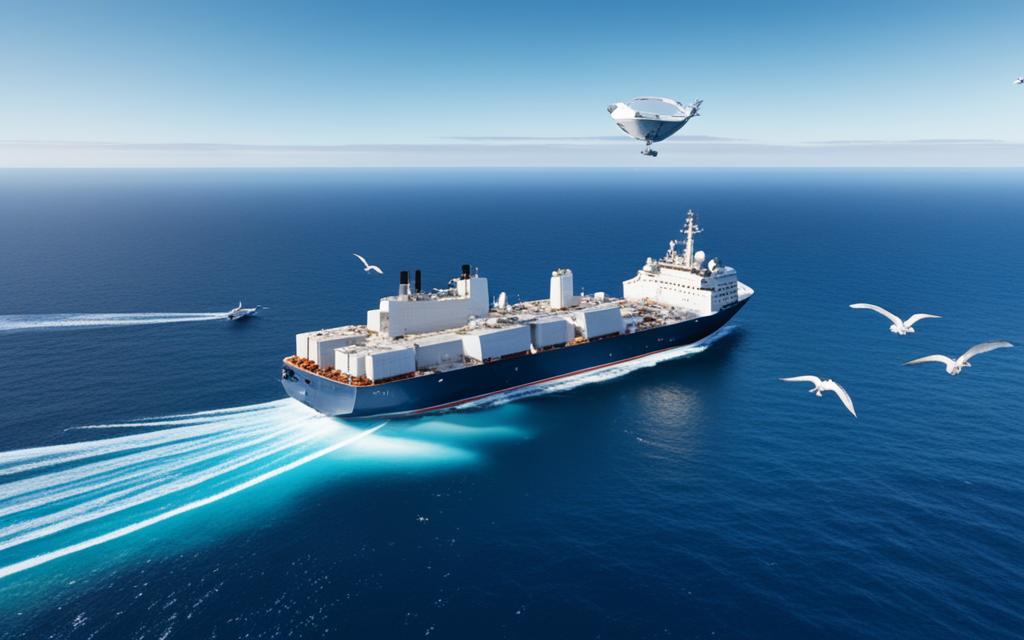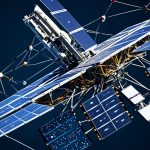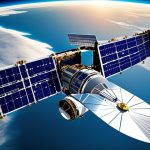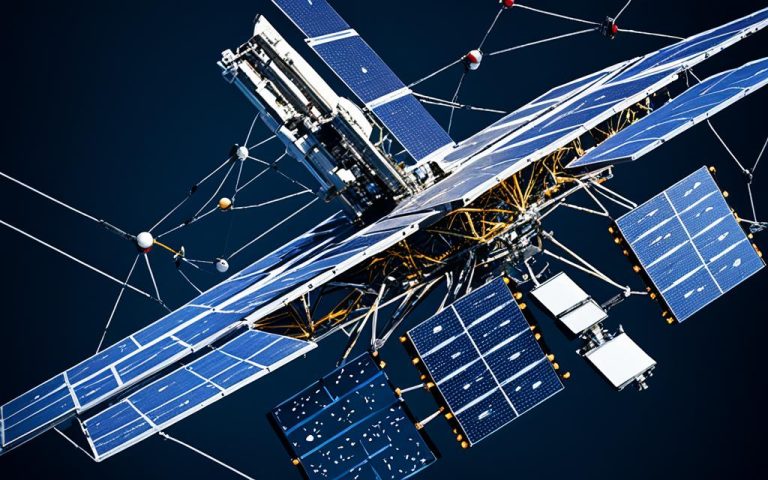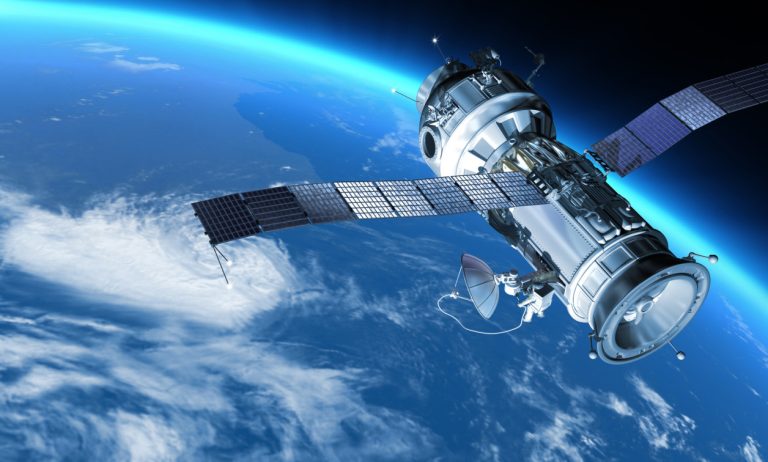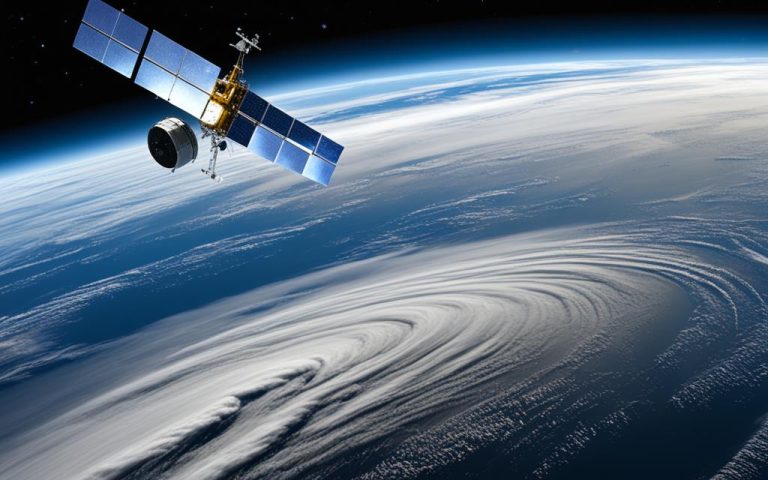In today’s interconnected world, maritime connectivity plays a crucial role in facilitating seamless communication and ensuring the safety and efficiency of sea communication. Satellite networks have emerged as a vital technology, revolutionizing the way maritime operations are conducted and transforming the industry as a whole.
Satellite data, sensors, and analysis provide valuable insights into the marine environment, improving marine environmental monitoring, weather forecasting, maritime safety, environmental risk management, and marine policy decision-making. With high-resolution imaging sensors, navigation systems, and efficient voice and data transmission, satellite networks pave the way for enhanced connectivity and efficient communication at sea.
By leveraging sensors on buoys and ships, satellite networks enable safer navigation, better environmental protection, and improved situational awareness. Continuous monitoring of marine ecosystem health aids in conservation and sustainable management. The transformative impact of satellite networks in the maritime industry is undeniable.
In this article, we will explore the limitations of traditional maritime connectivity methods and delve into the benefits and use cases of Low Earth Orbit (LEO) satellite networks. Additionally, we will discuss the obstacles to LEO satellite network adoption and the transformative impact of digitalization in the maritime sector.
The Communication Conundrum: Maritime Connectivity Limitations
Traditional GEO satellites face limitations in providing maritime connectivity. These satellites experience significant latency and bandwidth constraints, especially in remote and high-latitude regions. This can hinder reliable communication and data transfer for the maritime industry.
Fortunately, Low Earth Orbit (LEO) satellites offer a promising solution to these limitations. LEO satellites operate closer to the Earth’s surface, resulting in lower latency and higher data transfer speeds. This enables faster and more efficient communication between maritime vessels and onshore operations.
LEO satellites also offer more consistent global coverage, including polar regions that are crucial for maritime operations. By forming networks consisting of hundreds or thousands of small satellites working together, LEO networks provide continuous coverage across the earth’s surface, overcoming the geographical limitations faced by GEO satellites.
With their superior connectivity capabilities, LEO satellite networks are revolutionizing maritime communication. They solve the connectivity challenges faced by the maritime industry, ensuring reliable communication, enhancing safety measures, and improving crew welfare.
Advantages of LEO Satellites for Maritime Connectivity
| Advantages | Explanation |
|---|---|
| Lower latency | LEO satellites operate at lower altitudes, reducing the round-trip time for data transmission. This results in minimal delay and faster communication. |
| Higher data transfer speeds | LEO satellite networks offer higher data transfer speeds, enabling faster transmission of large data files and real-time video streaming. |
| Consistent global coverage | LEO satellites provide coverage across the entire globe, including remote areas and polar regions. This ensures uninterrupted connectivity for maritime operations worldwide. |
| Improved safety measures | With reliable communication through LEO satellites, maritime vessels can efficiently transmit distress signals and receive prompt assistance in emergency situations. |
| Enhanced crew welfare | LEO satellite networks enable crew members to stay connected with their families, access entertainment options, and receive telemedicine support during their time at sea, improving their overall well-being. |
By harnessing the advantages of LEO satellite networks, the maritime industry can overcome the communication conundrum and unlock new possibilities for efficient and connected operations.
LEO Satellites: Transforming Maritime Operations
LEO satellite networks offer a multitude of use cases in the maritime sector, revolutionizing maritime operations and unlocking a new era of connectivity and efficiency. These advanced satellite networks empower real-time communication and decision-making, enhance safety and emergency response, enable advanced IoT and automation technologies, and streamline supply chain and logistics operations.
One of the key advantages of LEO satellites is their ability to provide reliable and high-speed connectivity for vessel operations, navigation, and crew welfare services. With LEO satellites, crew members can stay connected with their families, access online training and professional development resources, and even receive enhanced medical support and entertainment options while at sea. This improved connectivity not only boosts crew morale but also enables better overall performance and productivity onboard.
Additionally, LEO satellites play a critical role in supporting safety measures and emergency response in maritime operations. These satellites enable reliable and real-time communication between vessels, making it easier to coordinate rescue efforts and provide assistance during distress situations. This capability is particularly crucial in remote areas and during extreme weather events, where traditional communication methods may be limited or unreliable.
Moreover, LEO satellite networks facilitate the adoption of advanced IoT and automation technologies in the maritime industry. These technologies can enhance operational efficiency, optimize fuel consumption, and enable predictive maintenance, among other benefits. By leveraging the power of LEO satellites, maritime operators can harness real-time data and insights to make informed decisions, reduce costs, and minimize downtime.
Lastly, LEO satellite networks contribute to streamlining supply chain and logistics operations within the maritime sector. With continuous and high-speed connectivity, stakeholders can track vessels and cargo in real time, optimize route planning, and ensure efficient delivery processes. This level of connectivity improves overall supply chain management, reduces delays, and enhances customer satisfaction.
Overcoming Obstacles to LEO Satellite Network Adoption
The adoption of LEO satellite networks in the maritime industry faces several obstacles that need to be addressed for widespread implementation and usage. These obstacles include:
- Regulatory Hurdles and Licensing: The maritime industry operates within a complex regulatory framework that governs the use of satellite networks. Obtaining the necessary licenses and approvals can be time-consuming and may involve multiple stakeholders.
- Uncertainties in International Waters: The international nature of maritime operations often introduces challenges in establishing consistent connectivity across different regions. Varying regulations and jurisdictions can create obstacles to seamless LEO satellite network adoption.
- Cost and Infrastructure Challenges: Investing in LEO satellite networks requires substantial financial resources to deploy and maintain the necessary infrastructure. The maritime industry must evaluate the cost-effectiveness and long-term viability of implementing these networks.
- Cybersecurity Risks: As satellite networks become more crucial for maritime operations, cybersecurity threats become a significant concern. Safeguarding data transmission and protecting networks from malicious activities are critical for the secure adoption of LEO satellite networks.
Addressing these obstacles requires collaboration among industry stakeholders, regulatory bodies, and satellite network providers. By working together, these groups can navigate the regulatory landscape, establish standards, and develop strategies to mitigate cybersecurity risks. It is essential to foster open dialogue and cooperation to pave the way for a connected and efficient maritime future.
The Potential Benefits of Overcoming Obstacles
Overcoming the obstacles to LEO satellite network adoption in the maritime industry can yield significant benefits:
“LEO satellite networks offer unparalleled connectivity and have the potential to revolutionize maritime operations. By overcoming obstacles and embracing these networks, the industry can enhance communication, improve safety measures, and enhance crew welfare.” – Industry Expert
| Benefits | Impact |
|---|---|
| Real-time Communication | Enables instant communication between vessels, coastal offices, and onshore teams, improving situational awareness and decision-making. |
| Safety Measures | Facilitates effective emergency response, enabling timely assistance and support in critical situations. |
| Crew Welfare | Enhances the well-being of crew members by providing reliable connectivity for communication, training, and access to medical support. |
| Efficient Operations | Optimizes supply chain and logistics operations, enhances navigation and vessel performance, and improves overall operational efficiency. |
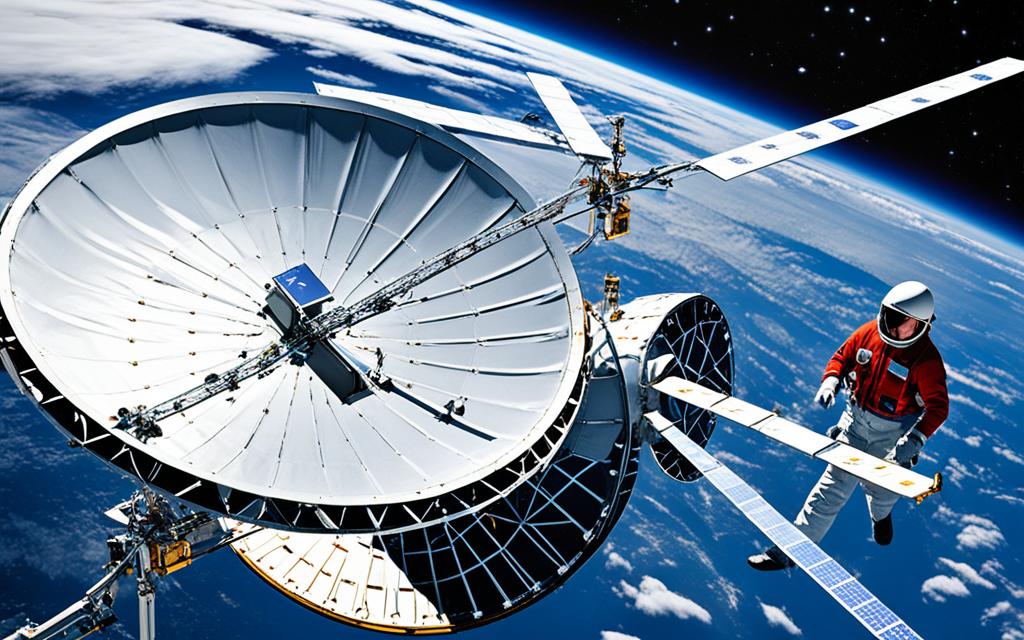
By addressing the challenges and embracing LEO satellite networks, the maritime industry can unlock the full potential of connectivity and usher in a new era of efficiency, safety, and connectivity.
The Transformative Impact of Digitalization in the Maritime Industry
Digitalization has revolutionized the maritime industry, bringing forth numerous advancements and opportunities. By embracing digital transformation, the industry has witnessed significant improvements in various aspects, including:
- Predictive and preventive maintenance
- Optimized routes and fuel consumption
- Enhanced supply chain management
- Improved crew welfare
Through the integration of digital tools and solutions into daily operations, maritime businesses have been able to optimize efficiency, minimize disruptions, and comply with safety and environmental regulations. However, the success of these digitalization efforts relies heavily on one crucial element – reliable and powerful connectivity.
The Importance of Connectivity in Digitalization
In order to fully leverage the benefits of digital transformation, the maritime industry requires seamless connectivity. From real-time data exchange to efficient communication networks, connectivity plays a vital role in enabling the effective implementation of digital solutions across various maritime operations.
For instance, predictive and preventive maintenance heavily rely on data transmission from onboard sensors and systems to shore-based maintenance centers. A stable and robust connectivity infrastructure ensures that maintenance teams receive real-time updates and can proactively address potential issues, minimizing downtime and optimizing vessel performance.
“Digital transformation in the maritime industry is not just about automating processes; it’s about leveraging data-driven insights to make informed decisions and drive operational excellence.”
Furthermore, in optimized route planning and fuel consumption management, connectivity enables the utilization of advanced algorithms and real-time weather and traffic data. Vessels can adjust their routes dynamically, avoiding adverse weather conditions and congested areas, resulting in significant fuel savings and reduced emissions.
The integration of digital systems also facilitates supply chain management, enabling real-time tracking and monitoring of cargo and vessel operations. With reliable connectivity, stakeholders throughout the supply chain can access timely information, enhancing coordination, efficiency, and overall customer satisfaction.
Lastly, digitalization improves crew welfare by providing reliable internet access, communication platforms, and entertainment options. Seamless connectivity allows crew members to stay connected with their loved ones, access online training and professional development resources, and receive rapid medical support when needed.
The transformative impact of digitalization in the maritime industry is undeniable. By harnessing the power of digital tools, leveraging data-driven insights, and ensuring seamless connectivity, the industry can achieve greater efficiency, sustainability, and competitiveness in the ever-evolving global maritime landscape.
| Benefits of Digitalization in the Maritime Industry | Connectivity Requirements |
|---|---|
| Predictive and preventive maintenance | Stable and robust connectivity for real-time data exchange |
| Optimized routes and fuel consumption | Access to real-time weather and traffic data through reliable connectivity |
| Enhanced supply chain management | Seamless connectivity for real-time tracking and coordination |
| Improved crew welfare | Reliable internet access and communication platforms |
In the next section, we will explore the obstacles to the adoption of LEO satellite networks in the maritime industry and the potential solutions to overcome them.
Conclusion
Satellite networks play a crucial role in enhancing maritime connectivity and enabling digital transformation in the industry. The limitations faced by the maritime sector in terms of connectivity can be addressed through the adoption of Low Earth Orbit (LEO) satellite networks. These networks provide real-time communication, improved safety measures, and enhanced crew welfare, revolutionizing the way maritime operations are conducted.
Although there are obstacles to the adoption of LEO satellite networks, such as regulatory hurdles, cost and infrastructure challenges, and cybersecurity risks, it is essential for industry stakeholders, regulatory bodies, and satellite network providers to collaborate and find solutions. Overcoming these obstacles will unlock the full potential of LEO satellite networks and pave the way for a connected and efficient maritime future.
By embracing satellite networks and digitalization, the maritime industry can achieve greater efficiency, sustainability, and connectivity. Digital transformation in the maritime industry has already proven its transformative impact, enabling predictive maintenance, optimizing routes and fuel consumption, enhancing supply chain management, and improving crew welfare. Reliable and powerful connectivity is the backbone of digitalization efforts in the industry, and satellite networks provide the necessary infrastructure for these advancements.
In conclusion, satellite networks, particularly LEO satellite networks, hold immense potential in revolutionizing maritime connectivity and driving digital transformation in the maritime industry. With continued efforts to overcome obstacles and embrace this technology, the industry can thrive with improved efficiency, sustainability, and connectivity.
FAQ
What are the benefits of using satellite networks for maritime connectivity?
Satellite networks provide valuable insights into the marine environment, improve marine environmental monitoring, weather forecasting, maritime safety, environmental risk management, and marine policy decision-making. They offer high-resolution imaging sensors, reliable communication and positioning systems, and efficient voice and data transmission. Satellite observations aid in continuous monitoring of marine ecosystem health, conserving and managing the marine environment sustainably.
How do Low Earth Orbit (LEO) satellites overcome the limitations of traditional GEO satellites?
LEO satellites offer lower latency, higher data transfer speeds, and more consistent global coverage, including polar regions. LEO networks consist of hundreds or thousands of small satellites that work together to provide continuous coverage. They solve connectivity challenges faced by the maritime industry, offering improved communication, safety measures, and crew welfare.
What are the use cases of LEO satellite networks in the maritime sector?
LEO satellite networks empower real-time communication and decision-making, enhance safety and emergency response, enable advanced IoT and automation technologies, and streamline supply chain and logistics operations. They provide reliable and high-speed connectivity for vessel operations, navigation, and crew welfare services, allowing crew members to stay connected with their families, access online training and professional development, and receive enhanced medical support and entertainment options.
What are the obstacles to the adoption of LEO satellite networks in the maritime industry?
The obstacles include regulatory hurdles and licensing, uncertainties in international waters, cost and infrastructure challenges, and cybersecurity risks. Overcoming these obstacles requires collaboration between industry stakeholders, regulatory bodies, and satellite network providers.
How does digitalization transform the maritime industry?
Digitalization enables predictive and preventive maintenance, optimized routes and fuel consumption, enhanced supply chain management, and improved crew welfare. Digital tools and solutions are incorporated into daily operations to optimize efficiency, minimize disruption, and comply with safety and environmental regulations.
What is the role of satellite networks in enhancing maritime connectivity and digital transformation?
Satellite networks play a crucial role in enhancing maritime connectivity and enabling digital transformation in the industry. LEO satellite networks offer solutions to the connectivity limitations faced by the maritime sector, providing real-time communication, improved safety measures, and enhanced crew welfare. Overcoming obstacles to LEO network adoption is essential for realizing the full potential of this technology. By embracing satellite networks and digitalization, the maritime industry can achieve greater efficiency, sustainability, and connectivity.

